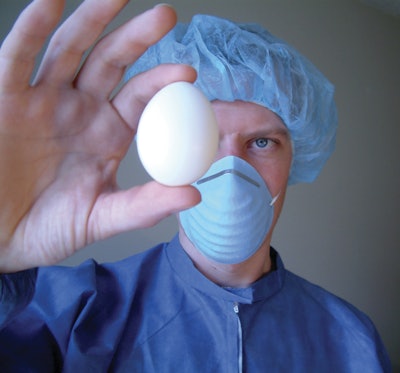
Biosecurity should be front of mind for all egg producers and is currently at the top of U.S. egg producer’s priority lists in 2022, with highly pathogenic avian influenza (HPAI) affecting 27.2 million laying hens so far.
According to Egg Industry Insight’s top companies survey, there are approximately 345 million layers in the U.S., meaning that HPAI has claimed 7.9% of U.S. layers over the last two months.
Therefore, the importance of having a biosecurity manager to develop and oversee a site-specific biosecurity program while continuously educating employees was the topic of Egg Industry Insight’s interview with James Roth DVM, PhD, Iowa State distinguished professor.
A culture of compliance
Large companies that have more than one site should have a biosecurity manager on each site to oversee its operation, explained Roth.
“Biosecurity is expensive and inconvenient for the people that have to follow those rules,” he said. “However, creating a culture of biosecurity compliance from the top down through consistency and education is what will give a producer the best shot at preventing HPAI from getting into a poultry house.”
Roth recommends the Information Manual for Implementing Poultry Biosecurity as a teaching guide for new managers and employees.
Ensuring that all employees realize the importance of following the biosecurity program is crucial, especially with the employee turnover the poultry industry is currently seeing. Roth advises to not only educate employees on good biosecurity practices, but also on the consequences of what happens if the HPAI virus enters the farm.
“Not only does it affect the birds, but it affects job availability,” he stated.
Every time a new employee is hired or a new third party worker comes onto the premises, they should be accompanied by a knowledgeable employee and trained on all the facility’s biosecurity rules. This includes having clean outerwear and sanitized tools.
“Some of the biggest culprits of a biosecurity breach is shared work crews, equipment and workers who occasionally come to the farm to perform repairs or maintenance,” said Roth.
While a producer’s biosecurity plan must be all encompassing, the education behind the plan is equally important.
“Having all the components of the biosecurity plan will not be effective unless it is being followed by all employees and visitors 24 hours a day, seven days a week, even when no one is looking,” he stated.
Roth recommends that biosecurity managers use the Checklist for Self-assessment of Implementing Poultry Biosecurity as a guidance document to help implement the minimum recommended procedures for audits.
“The approach taken in developing these biosecurity documents was to mitigate anything that could introduce a virus into a poultry house,” explained Roth. “This audit, along with a daily biosecurity checklist, is important when measuring compliance.”


















